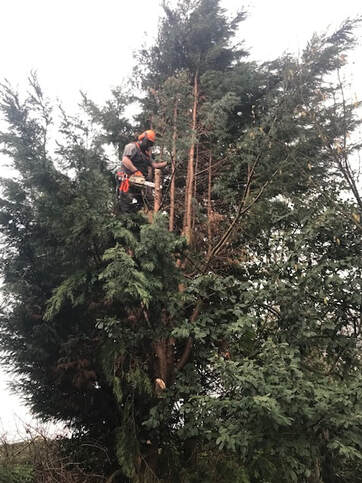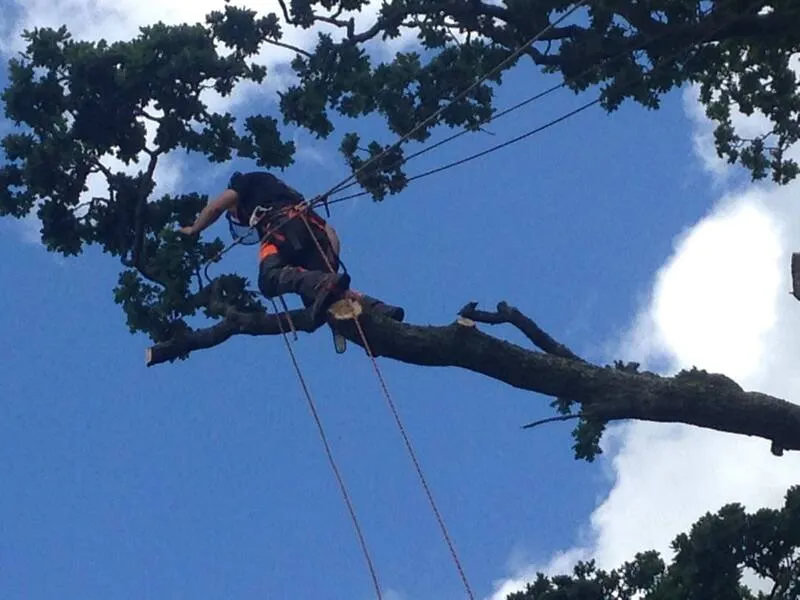Glasgow Green Tree Surgeons
Residential & Commercial Tree Services
Call Now To Arrange A FREE Quote
Emergency Tree Removal – Tree Trimming & Pruning – Stump Grinding & Removal – Wood Chipping Service
Emergency Tree Removal – Tree Trimming & Pruning – Stump Grinding & Removal – Wood Chipping Service
Fully Insured For Your Peace of Mind
No Need to Book Different Trades As We Do Everything!!!
Crown Reduction, Thinning & Lifting
Glasgow Green Tree Surgeons are Glasgow’s leading tree surgery company. We offer a range of tree care services, including crown reduction, crown thinning and crown lifting. This article will discuss these three processes in-depth, outlining the benefits of each process as well as when they are not advised to be carried out. We have many years of experience carrying out these types of procedures, with safety always being their number one priority.
What Is Crown Reduction?
Crown reduction is the process of reducing the size and weight of a tree’s crown to reduce wind resistance. This is often done by selectively removing some branches or parts of branches that are particularly heavy. The aim is to reduce the stress on roots as well as other important structures within trees, such as structural limbs that support larger limbs and trunks.
Benefits Of Crown Reduction
The main benefit associated with performing crown reductions is safety for people who may be nearby, such as pedestrians walking through public spaces such as parks or streets where trees have been identified as at risk from strong winds during storms. Another reason why you would carry out this type of procedure might be if there was concern about the damage being caused to buildings or vehicles near your trees due to their extensive canopies and root systems.
Call Stirling Tree Surgery on
Start Your Transformation Today

When Is A Crown Reduction Not Advised?
Crown reductions should never be carried out on trees in urban areas unless you are certain that there will be no negative consequences to doing so, such as causing damage to the tree itself or nearby infrastructure. If a tree has been diagnosed with a termite infestation, it would also put it into the category of high risk for performing any type of surgery upon its branches without first taking precautions against potential dangers like introducing chemicals into the air through sawdust produced by your equipment during cutting procedures.
The Process We Use For Crown Reduction
During crown reduction, the first thing we do is access the tree’s health. If we see any structural weaknesses in the trunk or major branches, this will cause us to stop immediately and not go ahead with a crown reduction procedure, which involves cutting back the branches. This is because we want to ensure that the tree’s structure remains intact and, therefore, safe for public viewing as well as posing any threat of immediate danger to anyone who might come into contact with it.
With crown reduction being such a delicate process in terms of ensuring safety precautions are met, you will also
notice that our arborists cut back your tree slowly and methodically so that they can see exactly what their saws are cutting through at all times-this means no damage or injury from flying wood chips! Our staff members always remain cognizant of the potential dangers associated with performing work on trees and take great care not to do anything which would put them in harm’s way.
What Is Crown Thinning?
Crown thinning is a procedure that we often recommend for trees that are healthy and have a very dense canopy.
When Is Crown Thinning Not Advised?
Crown thinning is not the best option if you want to reduce the overall weight of a tree, as this process would only remove branches from higher up in the crown. So, if you are looking for something that can decrease your trees’ total mass, then we suggest having them removed entirely!
Benefits Of Crown Thinning
While there is no specific reason for thinning the crown of such a tree, it can help improve airflow and light penetration throughout your yard or park, which will ultimately make your entire environment more enjoyable. Moreover, this process would not be harmful in any way whatsoever, because arborists only remove small branches in those areas where they feel another branch could start growing-so you don’t need to worry about losing too much foliage after one appointment with us.
The Process We Use For Crown Thinning
We begin by checking all of our equipment before starting work on removing unwanted limbs from trees during a crown thinning project, to avoid having loose objects fall on people below while they are still suspended out there within reach of our chainsaw blades. This includes making sure that our climbing gear is working properly and also checking the strength of any ropes which may be used at some point during a given day’s work safety first! The next thing we do when taking part in a crown thinning session is to measure the tree which is going to be worked on so that we know how much weight the remaining limbs can support, and also use this opportunity to check for any signs of disease or pest infestation.

If it turns out that a specific limb has become diseased during its time spent growing within the crown of a given tree, then it will need to be removed at some point for us to stand any chance of ensuring that the ailment does not spread throughout an otherwise healthy-looking part of said crown. In such cases, we usually begin by taking down one portion first before moving around to another section-depending upon where exactly each branch begins/ends-after giving ample consideration as to what might happen if we left them all in place while continuing our work elsewhere.
What Is Crown Lifting?
Crown lifting is a process that involves removing the dead or dying branches from a tree to expose its healthy form and structure.
Benefits Of Crown Lifting
Can help reduce disease spread among trees due to exposed wounds being treated more readily by natural elements such as water, sunlight, etc.
When Is Crown Lifting Not Advised?
Crown lifting is usually only carried out on young trees that have recently been planted or those which are diseased, so you might wonder why we would ever advise against performing it-well there are some legitimate reasons for doing so. If done too early, this can cause irreversible damage to a tree’s growth pattern, while if left until later in life, it will most likely require much more severe action than simply lopping off the top of the tree.
The Process We Use For Crown Lifting
This is a fairly straightforward procedure that requires us to remove any branches from the top or sides of your trees that are either dead, decaying or diseased, with those closest to you being removed first to avoid them breaking off during the rest of our work on your trees. We then cut out all growth above a safe height before finishing by providing some advice on how best to maintain its health going forward, such as fertilising etc.
Start Your Transformation Today
Contact Us
Would you like to transform your outdoor space into a luxury space that you and your family can enjoy?
Glasgow Green Tree Surgeons
Open Office Hours
Mondays – Fridays: 8 AM – 6 PM
Saturdays: 10 AM – 4 PM
Sundays: Closed
Get in Touch
Treesurgeoninglasgow.co.uk
5555-5555
Prefer to write to us? No problem. You can send us an. We aim to respond to all emails within 24 hours.
hello@treesurgeoninglasgow.co.uk
